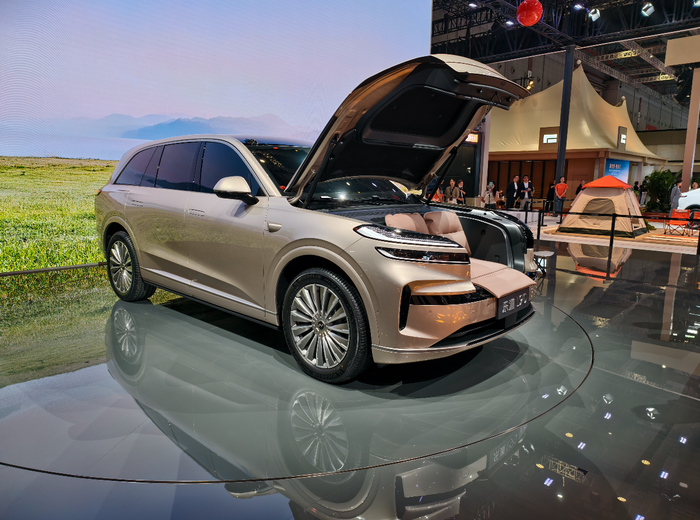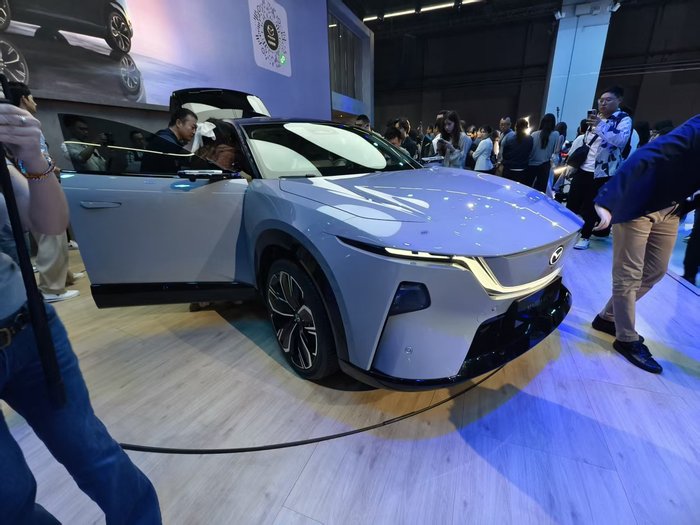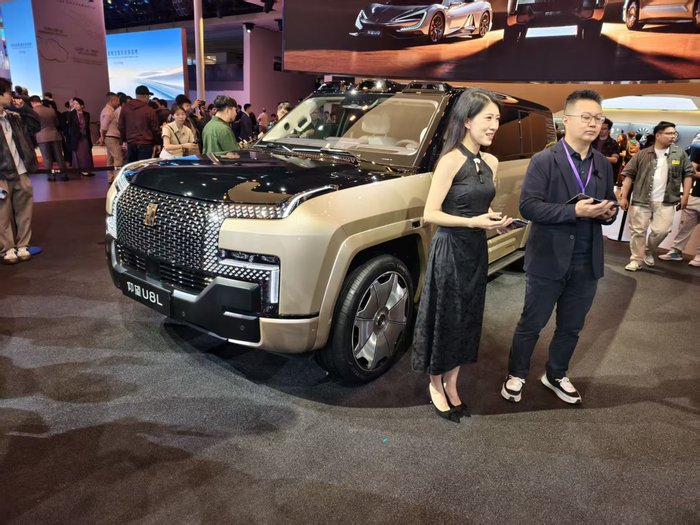Jiemian News spotlights models that represent major strategic moves for their makers and could reshape market segments in the year ahead.

Photo by Liu Zeran
by Liu Zeran
The 21st Shanghai International Automobile Exhibition (Auto Shanghai 2025) runs from April 23 to May 2 at the National Exhibition and Convention Center. This year’s edition is the largest yet, with nearly 1,000 automakers and suppliers from 26 countries and regions occupying more than 360,000 square meters—roughly the size of 50 football fields. Over the two media preview days alone, 193 press conferences are scheduled, offering a packed lineup of vehicle debuts and tech unveilings.
As one of the world’s top-tier auto shows, Shanghai has become a key battleground for global giants and rising Chinese brands. This year’s event spans fuel, hybrid, and fully electric models, with exhibitors including legacy players like Volkswagen, Toyota, and GM, as well as domestic leaders like BYD, Huawei, and the trio of Nio, XPeng, and Li Auto.
From hundreds of vehicles on display, Jiemian News spotlights 13 of the most noteworthy new models across price points and tech categories. These vehicles represent major strategic moves for their makers and could reshape market segments in the year ahead.
Onvo L90 (NIO Sub-brand)

The Onvo L90 is a full-size electric SUV riding on a 900V silicon carbide platform with battery-swap capabilities. Powered by a pure vision-based ADAS with dual Orin X chips, it offers up to 1,000 km of CLTC range. Priced around 300,000–350,000 yuan, it targets family buyers and may either revitalize the struggling Onvo brand or undercut NIO’s higher-end models like the ES8.
Audi E5 Sportback (SAIC Audi)

SAIC Audi’s first fully electric model, the E5 Sportback, combines sporty coupé styling with dual motors producing 570kW and an 800V architecture. Despite its impressive specs, the model doesn’t carry Audi’s iconic four-ring badge, raising questions about whether consumers will embrace it as a “true Audi.”
Deepal S09

Changan’s Deepal S09 is a large SUV positioned to challenge the Li Auto L9. It combines a long wheelbase, range-extender powertrain, and full intelligent driving suite. Starting around 300,000 yuan, it marks a shift from Deepal’s value-for-money image toward a premium brand identity.
Zeekr 9X

Zeekr's flagship SUV measuring 5.3 meters long with a 3.2-meter wheelbase. It supports EV, plug-in hybrid, and extended-range modes. Its bold design and upscale detailing have drawn praise—but also criticism for resembling the Rolls-Royce Cullinan too closely. Originality remains a talking point.
Mazda EZ-60

With its clean lines and aerodynamic touches, Mazda’s EZ-60 stands out visually. It’s supported by Changan’s EV and range-extender tech, but its compact size and weak EZ-6 sales raise concerns about whether buyers will choose it over larger, similarly priced alternatives.
Chery QQ EV

Chery’s QQ returns as a futuristic micro-EV with standout styling and a price around 60,000 yuan. It aims to bring advanced features to the A00 segment, but with fierce competition and intense price wars, it remains to be seen whether design and tech alone will win out.
Cadillac LYRIQ-V

The LYRIQ-V is Cadillac’s high-performance EV offering 615 hp, carbon fiber trim, and 0–100 km/h acceleration in under 4 seconds. However, it straddles the line between sporty and full-blown performance. Pricing will be key to whether it resonates with China’s luxury EV buyers.
Mercedes-Benz CLA Long-Wheelbase EV

This long-wheelbase CLA EV features coupé styling, a spacious cabin, and a drag coefficient of just 0.21. Inside are dual screens and the AI-powered MB.OS system. Priced at 250,000–350,000 yuan, its success depends on whether it can attract younger buyers in a crowded EV field.
SAIC Audi A5L

The A5L is a fastback sedan built on Audi’s PPC platform and the first internal combustion vehicle to feature Huawei’s ADS 3.0 intelligent driving system. With advanced sensors and L2+ functions, it’s a high-tech ICE car in a market shifting toward EVs, making its positioning complex.
Great Wall 4.0T V8 Engine

Great Wall showcased its 4.0T twin-turbo V8 engine, even without a production model on display. With demand in markets like the Middle East and regulatory openings in Europe, it could support ultra-premium ICE ambitions. Its success hinges on whether consumers will pay for a “China's First” V8.
Lexus New ES

The updated Lexus ES continues to perform well despite the downturn in imported sedans. It benefits from a reliable hybrid system and strong resale value. However, as Lexus preps local EV production in Shanghai, the ES could lose some of its premium appeal if pricing isn’t adjusted.
Volkswagen ID. AURA

A near-production concept, the ID. AURA merges VW’s 800V platform with XPeng’s vision-based ADAS, promising L2++ capability. Launching in 2026, it reflects German precision paired with Chinese speed. The question: will buyers pay more for a smart EV with tech that already exists in cheaper local models?
Yangwang U8L (BYD)

The Yangwang U8L is a full-size SUV with tri-row seating, advanced hydraulic suspension, and 3.6-second acceleration. Priced at 1.5–2 million yuan, it’s BYD’s bid for the high-end luxury segment. But without deep brand equity, converting tech strength into true premium appeal won’t be easy.